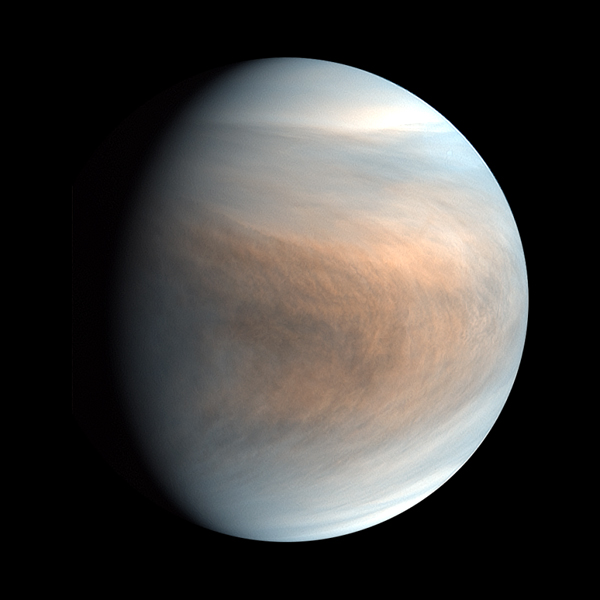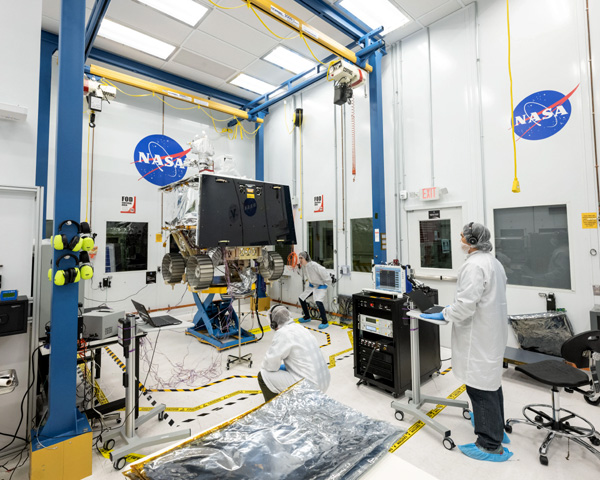
NASA, ESA, CSA, STScI, Brant Robertson (UC Santa Cruz), Ben Johnson (CfA), Sandro Tacchella (Cambridge), Phill Cargile (CfA)
NASA’s James Webb Space Telescope Finds Most Distant Known Galaxy (News Release - May 30)
This post highlights data from Webb science in progress, which has not yet been through the peer-review process.
Over the last two years, scientists have used NASA’s James Webb Space Telescope (also called Webb or JWST) to explore what astronomers refer to as Cosmic Dawn – the period in the first few hundred million years after the Big Bang where the first galaxies were born. These galaxies provide vital insight into the ways in which the gas, stars and black holes were changing when the Universe was very young.
In October 2023 and January 2024, an international team of astronomers used Webb to observe galaxies as part of the JWST Advanced Deep Extragalactic Survey (JADES) program. Using Webb’s NIRSpec (Near-Infrared Spectrograph), they obtained a spectrum of a record-breaking galaxy observed only two hundred and ninety million years after the Big Bang.
This corresponds to a redshift of about 14, which is a measure of how much a galaxy’s light is stretched by the expansion of the Universe. We invited Stefano Carniani from Scuola Normale Superiore in Pisa, Italy, and Kevin Hainline from the University of Arizona in Tucson, Arizona, to tell us more about how this source was found and what its unique properties tell us about galaxy formation.
"The instruments on Webb were designed to find and understand the earliest galaxies, and in the first year of observations as part of the JWST Advanced Deep Extragalactic Survey (JADES), we found many hundreds of candidate galaxies from the first 650 million years after the Big Bang. In early 2023, we discovered a galaxy in our data that had strong evidence of being above a redshift of 14, which was very exciting, but there were some properties of the source that made us wary.
"The source was surprisingly bright, which we wouldn’t expect for such a distant galaxy, and it was very close to another galaxy such that the two appeared to be part of one larger object. When we observed the source again in October 2023 as part of the JADES Origins Field, new imaging data obtained with Webb’s narrower NIRCam (Near-Infrared Camera) filters pointed even more toward the high-redshift hypothesis.
"We knew we needed a spectrum, as whatever we would learn would be of immense scientific importance, either as a new milestone in Webb’s investigation of the early Universe or as a confounding oddball of a middle-aged galaxy.
"In January 2024, NIRSpec observed this galaxy, JADES-GS-z14-0, for almost ten hours, and when the spectrum was first processed, there was unambiguous evidence that the galaxy was indeed at a redshift of 14.32, shattering the previous most-distant galaxy record (z = 13.2 of JADES-GS-z13-0). Seeing this spectrum was incredibly exciting for the whole team, given the mystery surrounding the source.
"This discovery was not just a new distance record for our team; the most important aspect of JADES-GS-z14-0 was that at this distance, we know that this galaxy must be intrinsically very luminous. From the images, the source is found to be over 1,600 light-years across, proving that the light we see is coming mostly from young stars and not from emission near a growing supermassive black hole.
"This much starlight implies that the galaxy is several hundreds of millions of times the mass of the Sun! This raises the question: How can nature make such a bright, massive and large galaxy in less than 300 million years?
"The data reveal other important aspects of this astonishing galaxy. We see that the color of the galaxy is not as blue as it could be, indicating that some of the light is reddened by dust, even at these very early times.
"JADES researcher Jake Helton of Steward Observatory and the University of Arizona also identified that JADES-GS-z14-0 was detected at longer wavelengths with Webb’s MIRI (Mid-Infrared Instrument), a remarkable achievement considering its distance. The MIRI observation covers wavelengths of light that were emitted in the visible-light range, which are redshifted out of reach for Webb’s near-infrared instruments.
"Jake’s analysis indicates that the brightness of the source implied by the MIRI observation is above what would be extrapolated from the measurements by the other Webb instruments, indicating the presence of strong ionized gas emission in the galaxy in the form of bright emission lines from hydrogen and oxygen. The presence of oxygen so early in the life of this galaxy is a surprise and suggests that multiple generations of very massive stars had already lived their lives before we observed the galaxy.
"All of these observations, together, tell us that JADES-GS-z14-0 is not like the types of galaxies that have been predicted by theoretical models and computer simulations to exist in the very early Universe. Given the observed brightness of the source, we can forecast how it might grow over cosmic time, and so far we have not found any suitable analogs from the hundreds of other galaxies we’ve observed at high redshift in our survey.
"Given the relatively small region of the sky that we searched to find JADES-GS-z14-0, its discovery has profound implications for the predicted number of bright galaxies we see in the early Universe, as discussed in another concurrent JADES study (Robertson et al., recently accepted). It is likely that astronomers will find many such luminous galaxies, possibly at even earlier times, over the next decade with Webb.
"We’re thrilled to see the extraordinary diversity of galaxies that existed at Cosmic Dawn!"
These spectroscopic observations were taken as part of Guaranteed Time Observations (GTO) program 1287, and the MIRI ones as part of GTO program 1180.
Source: NASA.Gov








































